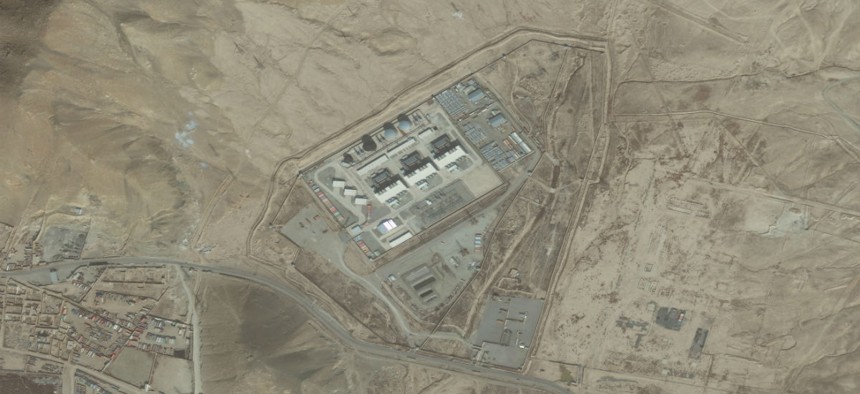
An aerial view of the Tarakhil Power Plant. Special Inspector General for Afghanistan Reconstruction
Afghanistan Watchdog Goes Another Round with USAID Over $335M Power Plant
SIGAR reiterates assertion that plant near Kabul risks failure.
The $335 million U.S.-built electrical power plant considered key to Afghanistan’s economic stability continues to be dangerously underutilized, despite repeated claims of progress by the U.S. Agency for International Development, a watchdog said.
A review of USAID-supplied production data on the Tarakhil Power Plant near the capital Kabul “shows that the rate of power production has actually declined over time,” the Special Inspector General for Afghanistan Reconstruction said in a letter to USAID. “From February 2014 through April 2015, the plant exported just 8,846 megawatt hours of power to the Kabul grid, which is less than 1 percent of Tarakhil's production capacity during that period.”
The claim that the plant forms a vital component of the war-torn nation’s urban electric grid is belied by SIGAR’s review of data both from USAID and independent sources, according to the letter. “Rather than serving as a backup or emergency source of power, the plant was originally intended to serve as a base load plant, providing electrical power to Kabul on a continuous basis,” said the letter from John Sopko to USAID Assistant Administrator for Afghanistan and Pakistan Affairs Larry Sampler.
“The use of the plant on only an intermittent basis―involving frequent starts and stops, which place greater wear and tear on the engines and electrical components―has caused damage to the plant,” the letter said. “This underutilization has apparently resulted in the premature failure of equipment, which was expected to raise already high operation and maintenance costs, and could result in ‘catastrophic failure.’ ”
USAID spokesman Ben Edwards on Thursday said in a statement to Government Executive that “Afghanistan's ongoing transition from diesel fuel to lower-cost sources of energy demonstrates that the Afghan energy sector is becoming more affordable for businesses and individuals. In Kabul, the diesel-fueled Tarakhil Power Plant is now used as a back-up power facility that supplies electricity when lower cost sources of energy like hydroelectric and imported energy from the surrounding region is unavailable,” he said. “USAID has actively supported the ability of the Afghans to operate and maintain the plant by establishing a new computerized maintenance management system, providing extensive training to staff, and overseeing current operations and maintenance of the plant.”
USAID also noted that the Tarakhil plant provided a healthy 10 percent of Kabul’s power needs after an avalanche disabled other sources in February, and that the agency has closed all the recommendations made for the plant by USAID’s own inspector general.
NEXT STORY: Jeb Bush Will Not Commit to Torture Ban







